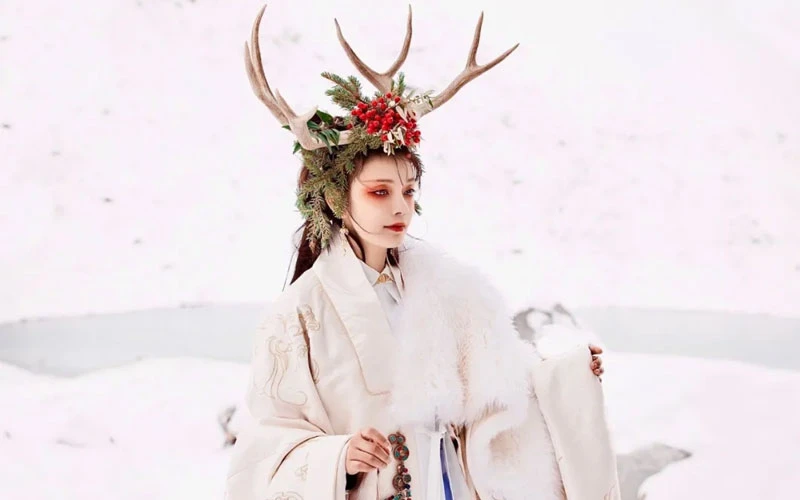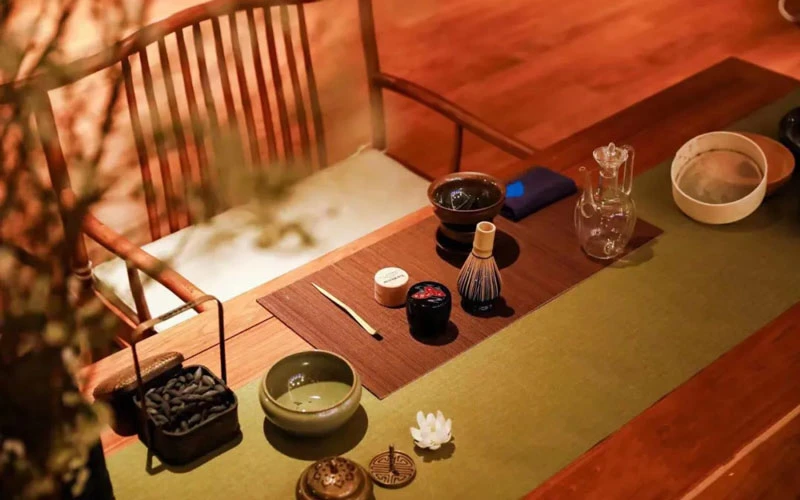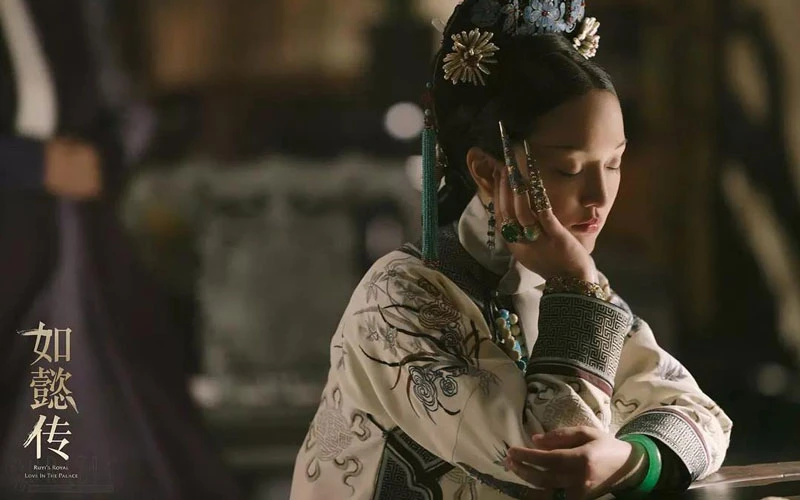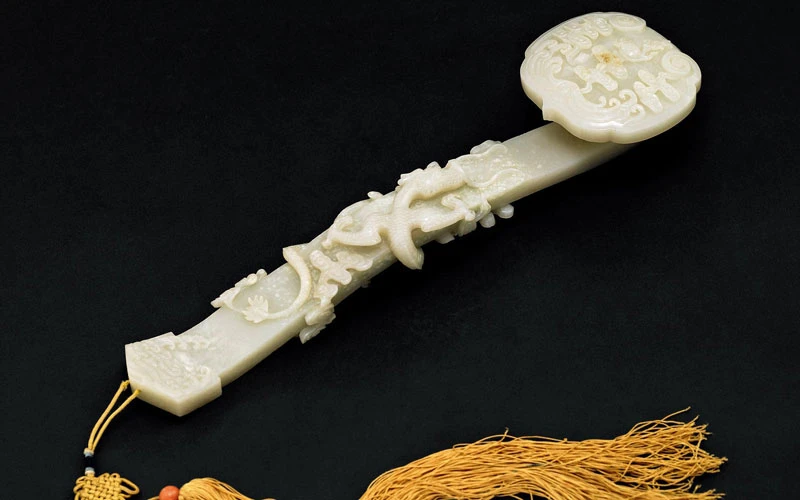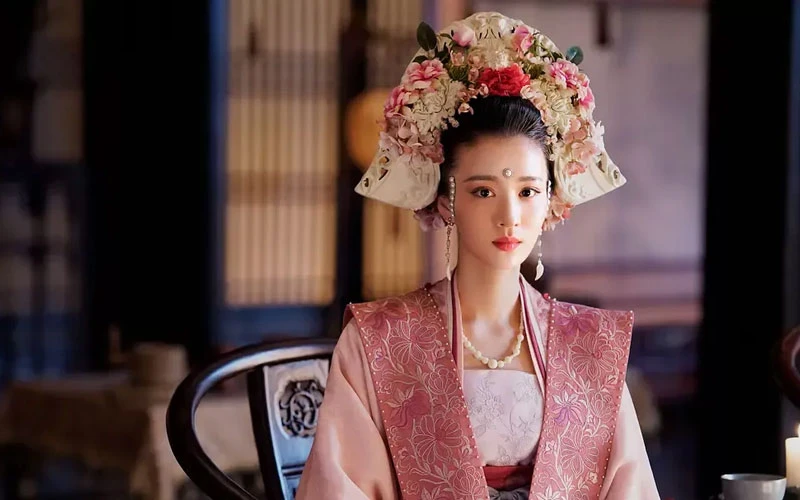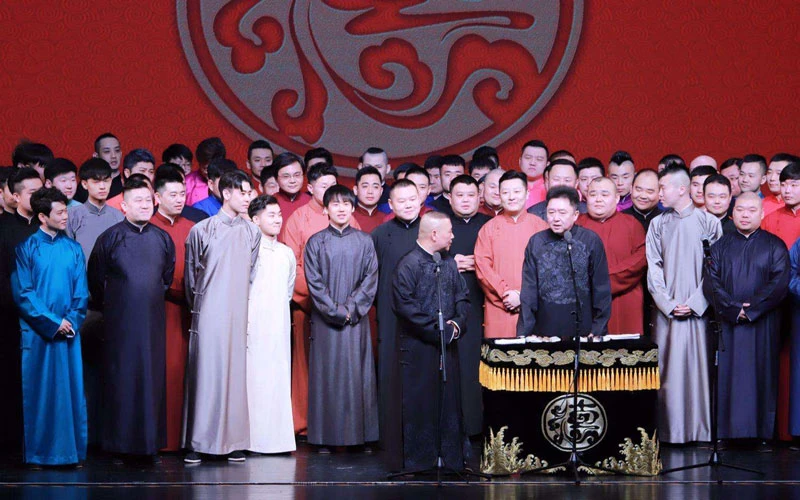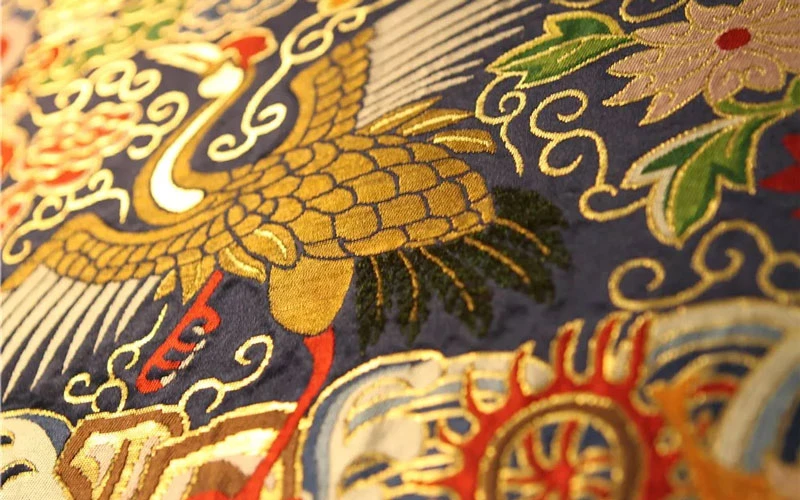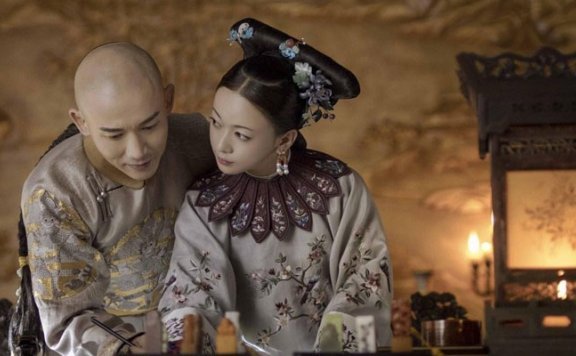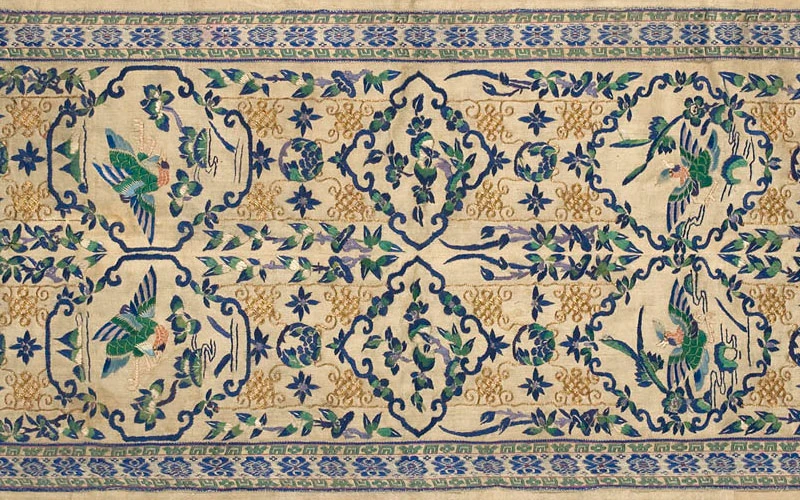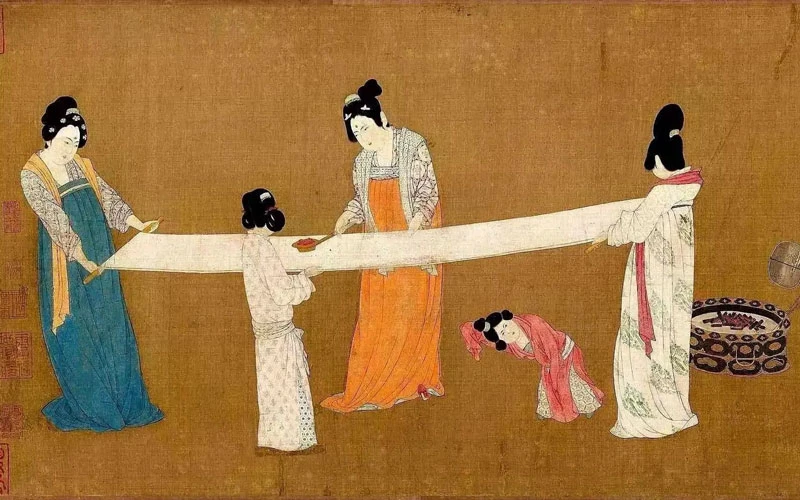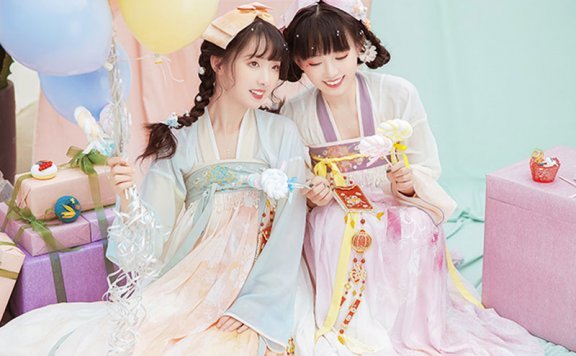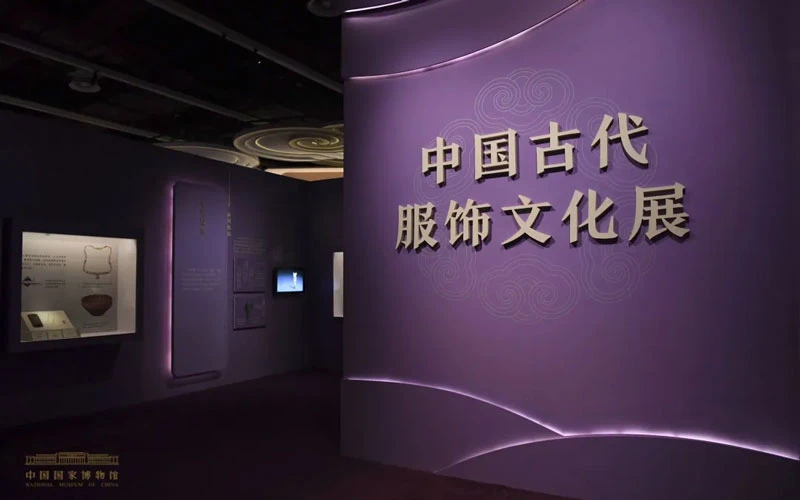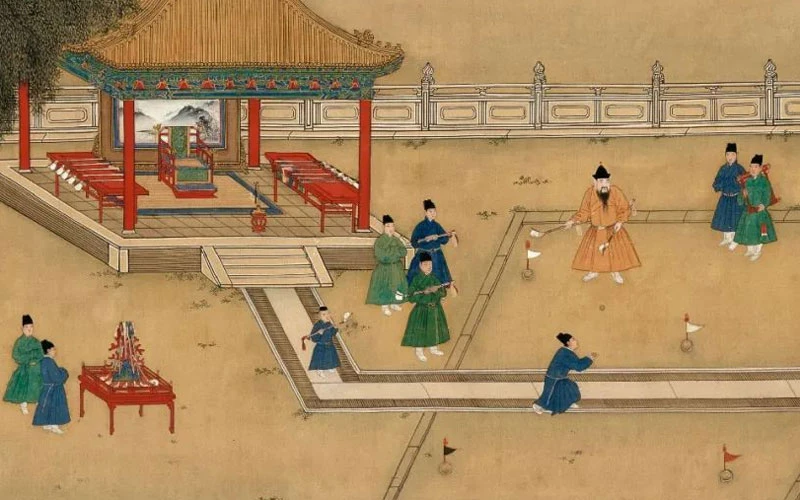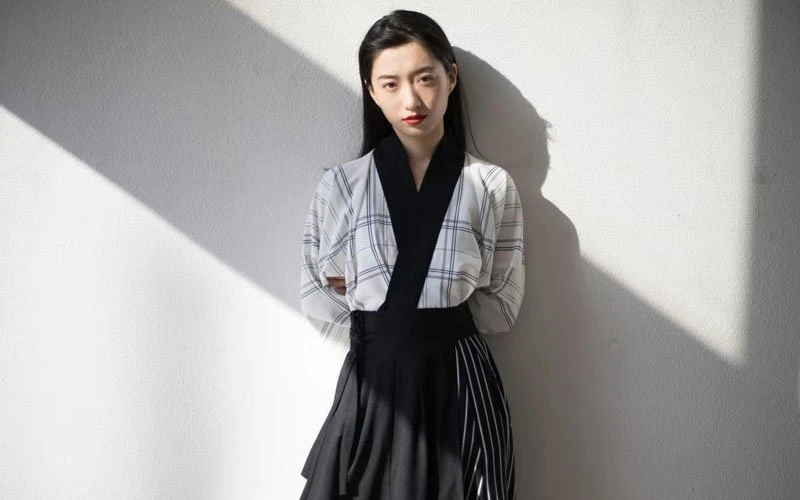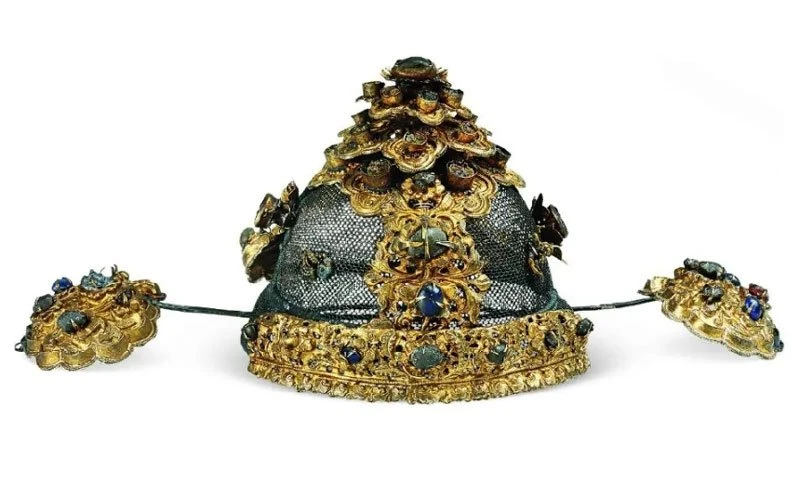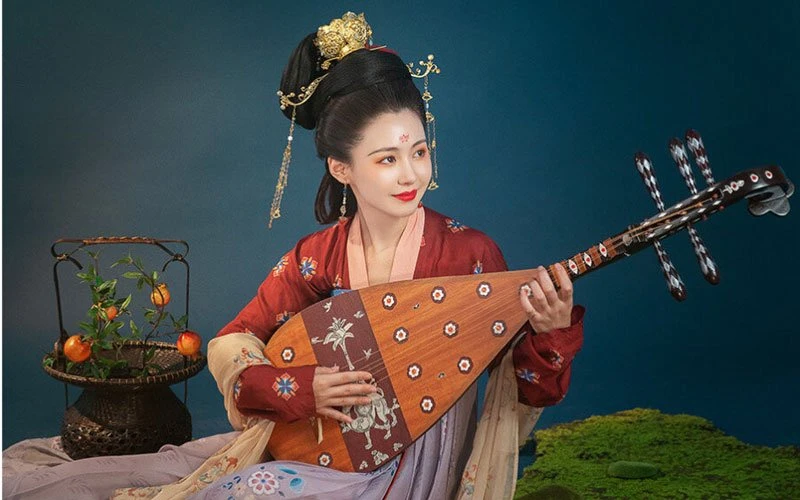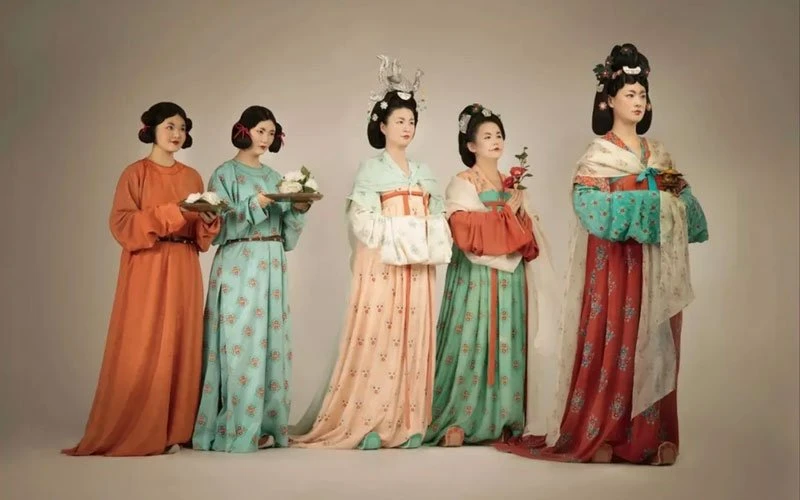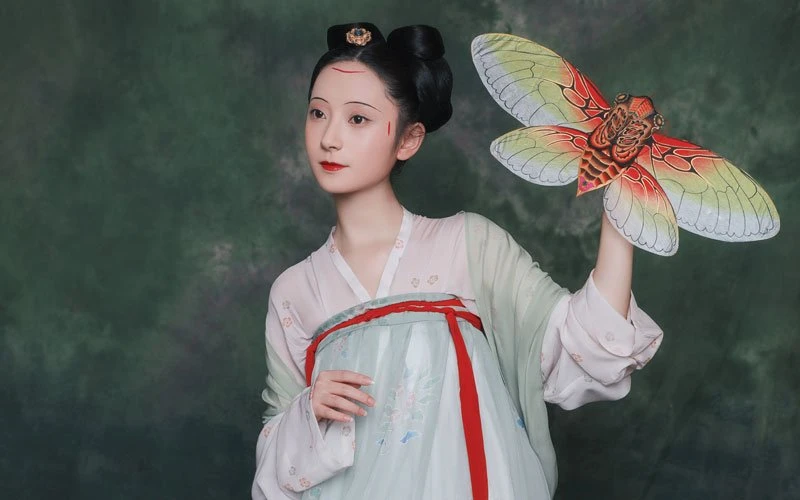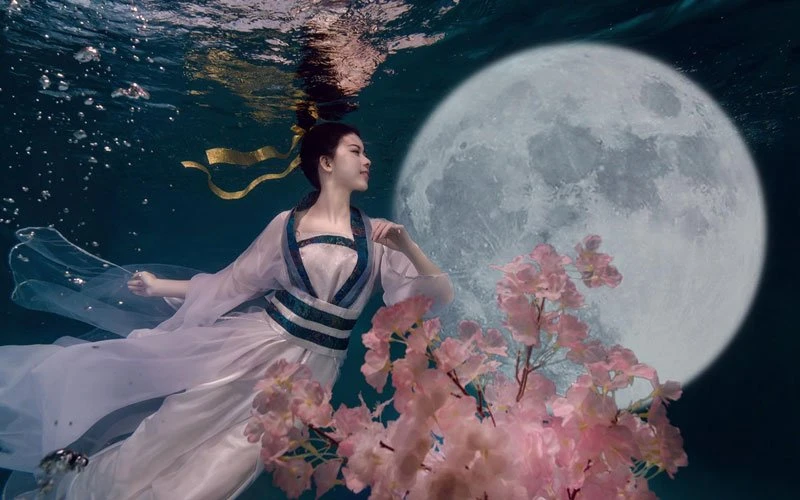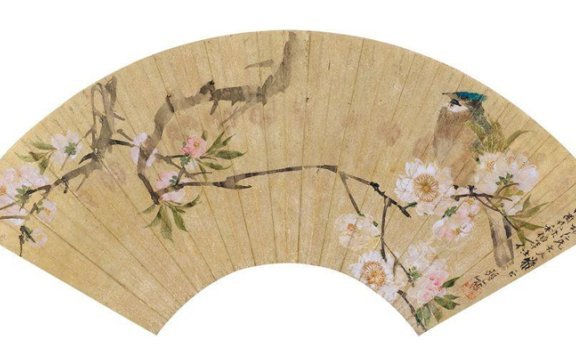Article
Search results for the keyword [hanfu making]:
-
Mythology? Legends? 95s Girl Recreating the Original Shan Hai Jing
This year, the Cantonese opera movie "Snake White (白蛇传·情)" was released, the combination of traditional Chinese opera and modern visual effects, let us surprised: the original traditional culture can also be so fashionable! And the protagonist of today's story, anthropomorphizing the mysterious and mythical creatures in the Shan Hai Jing, recreates the magnificent world of mythology. She has been reported by China Daily, Huaxi City Daily, and many other official media, while triggering the attention of millions of netizens. She is the photographer Huanhuan (焕焕). The "Shan Hai Jing (山海经, Classic of Mountains and Seas)" is an important ancient book of the pre-Qin Dynasty of China, and is also one of the oldest books rich in myths and legends, recording ancient Chinese mythology, geography, plants, animals, minerals, products, sorcery, religion, medicine, folklore and ethnicity, which can be said to be comprehensive. Recreate the dream of childhood When she was young, Huanhuan was obsessed with the fantasy world of mythology, and her grandmother would often tell her various mythological stories: snakes with nine heads, birds with three legs, fish with wings...all these stories were so fascinating to Huanhuan that she began to yearn for the mysterious "Mythical World". Later, Huanhuan… -
The Guide on Song Dynasty Traditional Whisking Tea
Chinese tea culture originated in the Tang Dynasty and flourished in the Song Dynasty. In the Song Dynasty, tea had become a necessity in people's daily life. With the overall prosperity of the Song dynasty's social commodity economy, tribute tea, tea sets, tea art, tea workshops, etc., but also flourished. The traditional Dian Cha (点茶, whisking tea) in the Song Dynasty had an extremely important position in the history of the Chinese tea ceremony. In this article, we will introduce the history and steps of whisking tea in the Song Dynasty, and let's feel the elegance of the literati in the Song Dynasty. China's Tea Culture Chinese tea culture has a long history, the earliest written record is: "Shennong tasted hundred herbs, the day encountered seventy-two poisons, and got the Tu (荼) and solve", where the "Tu" is tea. Tea (茶) in the history of the five had used the name: Tu (荼), Jia (槚), She (蔎), Ming (茗), Chuan (荈). In five thousand years of Chinese civilization, people have accumulated a deep tea culture. In history, the application process of tea is roughly medicinal, edible, drinking. The way of tea drinking has also gone through several stages of… -
History and Type of Chinese Nail Guards
Traditional Chinese nail guards (Zhi Jia Tao, 指甲套), also known as "Hu Zhi (护指, finger protection)". The ancient palace noblewomen used gold and silver to make nail guards to protect their nails and show their status, were extremely fine and gorgeous, with a wide variety. If you have watched the wonderful historical TV drama Ruyi's Royal Love in the Palace, you may have noticed that the concubines in the drama have long nails on their slender hands and wear nail guards on their end fingers, showing their nobility and elegance. Such luxurious Chinese nail guards, in addition to showing the identity status characteristics, what is its role, today let's explore it! History of keeping long fingernails Everyone has a love of beauty. Since ancient times, it has been every woman's wish to have a pair of delicate hands, and the ancient Chinese had three main aesthetic standards for women's fingers: pointed, long, and white. The direct purpose of keeping long nails for women in ancient times was to make the nails extend the fingers, making the hand shape look sharp and long. And in ancient times, both men and women pursued long nails for beauty, many noble families and literati,… -
What is the Chinese Jade Ruyi Scepter
As a symbol of good fortune, Ruyi (如意, scepter) is a traditional handicraft unique to China that emerged during the Warring States period and has evolved in form and cultural connotation through the Han, Wei, and Jin dynasties, Tang, Song, and even Ming and Qing dynasties. Interestingly, the initial function of the Ruyi is the same as the backscratcher we use today. Only later did it evolve from a practical tool to a beautiful display at a later stage. Origin of Ruyi According to the National Palace Museum, Ruyi originated from the "Sao Zhang (搔杖)" (now called backscratcher) used by the ancients to scratch an itch. The earliest Ruyi, the end of the handle in the shape of a finger, to reach that the hand can not reach, so that can follow heart to relieve the itch, so-called Ruyi. Later, the "Sao Zhang" was combined with "Hu (笏, referring to the hand board used by courtiers to record their business at court)", and the shape gradually evolved into a curved head, and the end of the handle changed from straight to small Lingzhi-shaped, cloud-shaped and other shapes. The head and tail echo each other, the main body is streamlined, the… -
Fashion Secrets in Traditional Chinese Jewelry Boxes
A complete hanfu look is certainly not complete without fine jewelry to match. In the course of ancient history, traditional Chinese jewelry naturally evolved, graceful and luxurious, or refined and small. In this article, we will reveal through the order of dynasties, the fashion secrets in ancient traditional Chinese jewelry boxes. Let's see those periods of "China-Chic" how fashionable. Wei, Jin and North and South Dynasties: A Fashion Trend from Abroad? The poem "Ballad of Mulan" contains the line: "She combs her hair by the window and, before the mirror, fastens golden yellow flowers." This "yellow flowers (Hua Hunag, 花黄)" refers to the makeup of women in the Wei and Jin dynasties, which was inspired by Buddhism. Due to the popularity of Buddhism, the Buddha-nature of gold brought inspiration to women, so although the "flower yellow" in makeup may have been a little exaggerated, but it does reflect the characteristics of Buddhism at the time, as well as the pursuit of exoticism. Of course, the rise of the introduction of Buddhism to the fashion circle brought not only makeup, with the matching jewelry also with a clear Buddhist style. In terms of production materials, although gold and silver remained… -
Then and Now of the Chinese Traditional Changshan
During the Republic of China, the three most classic men's clothing, in addition to suits, Zhongshan suit, there is a Chinese traditional Changshan. At that time, gentlemen usually wear a ankle-length Changshan, only the leakage of Western-style leather shoes, so as to look enlightened and progressive, but also not lose the traditional elegance. Characteristics of the Traditional Changshan Changshan (长衫, long shirt, or tunic), also known as Changgua (长褂, long coat), it is a style of clothing that was improved by the Han Chinese during the Qing dynasty based on the traditional robe and following the Qing dynasty clothing system. Changshan can be worn with a Magua (马褂, the prototype of Tang suit), "Magua Changshan (Changpao)", became the most common male wear in the late Qing Dynasty and the early Republic of China. After entering the Republic of China, the number of ordinary people wearing Magua in their daily general life gradually decreased. If someone wears a Magua outside the Changshan, it is already a very grand dress, and a blue Changshan with a black Magua is the formal dress in the Republic of China. Different from the Manchu Qi dress, traditional Changshan is characterized by: no horseshoe sleeves,… -
History of Chinese Silk Crafts: Cloud Brocade(Yunjin)
Nanjing Cloud Brocade (云锦, Yunjin) is a traditional Chinese silk craft that dates back to 417 and has a history of 1,600 years, known as "inch of brocade, inch of gold". Today, the traditional characteristics and unique skills of cloud brocade are still maintained, and the traditional jacquard wooden machine weaving has been retained. This traditional hand weaving technique, which relies on human memory to weave, still cannot be replaced by modern machines. In the ancient silk fabric, "brocade (Jin, 锦)" is the fabric representing the highest level of technology. The three famous Chinese brocades are cloud brocade, Shu brocade (蜀锦), and Song brocade (宋锦), and Nanjing cloud brocade is a collection of the art of weaving silk craft of all generations, ranking the first, represents the highest achievement of Chinese silk weaving, and is the brilliant crystallization of Chinese silk culture. This article will share the history, characteristics of Chinese silk crafts: the Nanjing Yun brocade. History of Nanjing Cloud Brocade At the end of the Eastern Jin Dynasty, Liu Yu destroyed the Later Qin and moved the craftsmen workers to Nanjing, where advanced production techniques were brought to the south from Xi'an and the silk weaving industry… -
Ancient Chinese Headdress Qing Dynasty Bian Fang
Qing Dynasty was the last stage of the highly developed feudal society in China. With the evolution of the dynasty, the Qing dynasty Manchu women's headdress is rich and diverse. Inheritance of headdress in the past generations, but also according to the national dressing characteristics, create jewelry corresponding to it. One of the most ancient Chinese headdress representatives is the Bian Fang (扁方). 01 What is Bian Fang? Bian Fang is one of the traditional hair ornaments in ancient China, which was mainly popular in the Ming and Qing Dynasty, used to fix hair. The shape of its head is generally curvy and its body is often 1-shaped. They have different shapes, large, small, wide, or narrow. The large one can reach more than 30cm. The small one, also known as double-tip, can be used as hair fixing or decoration. The large one is used to fix "two buns head (两把头)". Let's take a look at the evolution of women's hairstyles in the Qing Dynasty! Before the Qing Dynasty, Manchu people originally lived in the northern region, influenced by the environment, has long been accustomed to fishing and hunting, farming lifestyle. In order to move quickly and easily, easy to… -
History of Cuff Embroidery in Qing Dynasty Clothing - Wanxiu
What is Wanxiu Among traditional Chinese embroideries, there is a very unique type of embroidery: Wanxiu (挽袖), which is the detachable part at the end of the sleeve of a traditional Chinese Qing Dynasty woman's dress. It is about 66cm long and 13cm wide, and is embroidered in pairs; the motifs range from small bridges and flowing water, pavilions, plum, orchids, bamboo, and chrysanthemums, to Four arts (Qin, Qi, Shu, and Hua), talented men and women, etc. With exquisite patterns and workmanship. he Wanxiu is both decorative and functional, with thread sewn into the clothes when in use, and rolled out when worn, which is both beautiful and can adjust the length of the sleeves, and women in the Ming and Qing dynasties interpreted their personal understanding on the sleeve pattern, making it a rich and delicate emotional trust unique to women, reflecting the subtle connotation and profound meaning of women's art. Han style dress deeply influenced the Manchu court Manchu women's clothing style, the royal family in order to show the elegance, in the production of excellence, and the integration of the Manchu culture. To the early Republic of China, the influence of Western dress culture, coupled with the… -
Painting Appreciation: Court Ladies Preparing Newly Woven Silk
"Court Ladies Preparing Newly Woven Silk (Dao Lian Tu, 捣练图)" is a famous Chinese painting of the Tang Dynasty. It showing noble women ironing, sewing, and pounding the silk. It is an important custom painting of the Tang Dynasty, and is one of the more chic works among the paintings of ladies in the Tang Dynasty. It is the work of Zhang Xuan (张萱), a painter of the Tang Dynasty, and has had a great influence on the style of later paintings, and is also a great help to the study of modern Hanfu styles. Let's see the special details of this painting. Zhang Xuan of Tang Dynasty "Court Ladies Preparing Newly Woven Silk" was originally painted by Zhang Xuan in the Tang Dynasty, the painting "Lady Guoguo's Spring Outing (虢国夫人游春图)" is also a painting by him. Zhang Xuan mainly depicts the leisurely life scenes of royal and noble women, such as spring Outing, dressing up, drumming the qin, playing music, and enjoying the snow. Copied by Emperor Huizong Tang and Song history recorded dozens of Zhang Xuan's paintings, many also repeatedly copied by many painters, but out of Zhang Xuan's own handwriting of the original work, today there is… -
5 Kind of Beauty Traditional Chinese Clothing for Female
"Traditional Chinese Clothing" has been popular in the world through the Xia, Shang, and Zhou dynasties, the Spring and Autumn and the Warring States, the Qin and Han dynasties, the Wei, Jin, North and South dynasties, the Sui and Tang dynasties, the Song, Yuan, Ming and Qing dynasties, and in modern times, with distinctive features, mainly Chinese Hanfu. This article will show you the "beauty of traditional Chinese clothing" in five different periods. The Beauty of traditional Chinese clothing- Western Han Dynasty The most representative clothing of the Western Han Dynasty is the Su Sha Danyi (素纱襌衣), a very light garment: from the collar to the hem, are 1.28 meters long; the sleeves are 1.9 meters long; even so, this wide robes with large sleeves are only 49 grams, and when folded, can fit into a small matchbox. The Su Sha Danyi was unearthed in 1972 at the Mawangdui Han Tomb No. 1 in Changsha, and is now collected in the Hunan Provincial Museum. Su Sha Danyi is not just a piece of clothing, but the result of the cultivation and spinning industry of the early Western Han Dynasty. The Beauty of traditional Chinese clothing - Wei and Jin The… -
A Must See Ancient Chinese Costume Exhibition in 2021
Ancient Chinese Costume Culture Exhibition Launch date: February 6, 2021 Venue: North 18 Exhibition Hall, National Museum of China (Beijing) Clothing is not only a necessity for people's life, with the practical function of "sheltering from the cold and heat, protecting from the wind and rain, covering the body", but also an important carrier of ancient culture, with the cultural function of "distinguishing between superiority and inferiority, distinguishing between nobility and inferiority, and distinguishing between affinity and alienation". The development of Chinese clothing culture over the past thousands of years not only reflects the development trajectory of ancient material and spiritual civilization, but also outlines the continuous life of the Chinese people. On February 6, 2021, the "Ancient Chinese Costume Culture Exhibition" was officially opened at the National Museum of China. The exhibition is based on decades of academic research by Mr. Sun Ji and other scholars, divided into six sections according to historical periods, the exhibition features nearly 130 artifacts (sets) covering jade and stone, bone, pottery, costumes, gold and silver accessories, and calligraphy and paintings, with more than 40 auxiliary exhibits, about 170 pictures, and multimedia facilities, making it an extraordinary exhibition. If you are interested in ancient… -
What Sports Were Played in Ancient China?
Chuiwan: ancient golf In ancient China there was another sport, in which a stick was used to hit a ball. At first there were two ways to play: on horseback or on foot. The first resembles polo, a sport as popular as cuju in the Tang Dynasty. The second is like field hockey today, a highly competitive contest calculated by the number of goals. In the Song dynasty, a new method, called Chuiwan (捶丸), was invented. There were two main differences between chuiwan and the previous game: first, the ball was not hit into the goal but into a hole; second, direct confrontation was changed to indirect confrontation. The game of chuiwan consisted of two teams hitting the ball with a stick into the holes previously dug in the ground. Those who hit the ball the least number of times to get it into the holes or those who had the most goals were the winners. Chuiwan can be played individually or as a team. The distance between the batter and the holes differed from 10 to 20 meters. When one hit the ball and got it into the chosen hole in three strokes, one won a point. The sticks… -
6 Surprisingly Easy Ways To Wear Han Element In Daily Life
Compared to the more complicated and dignified styles of Hanfu suits, the style of Han element suits is much simpler. For many people who are new to Hanfu, Han elements are a very good choice. Han element set that can make us feel the classical style of Hanfu and also be easy to wear in daily life. We would like to recommend six sets of Han element suits for daily wear, which we hope helpful for you. Black & White Checkered Jin-style Set This black and white checkered Jin-Ru (晋襦) with black striped skirt is based on the Jin Dynasty Han clothing system, using simple lines to highlight the outline of the Wei-Jin clothing, without unnecessary decorations and colors, and the large black collar and skirt make the overall style stand out, showing the modernism of urban Han clothing. The black color itself is skinny, and with the narrow blouse and sleeves, it makes the figure look slimmer. Airplane Sleeves Song-style Set The design is based on the Song-style Hanfu costume, with a black cross-array for the airplane sleeves shirt, a full sequin for the Moxiong (抹胸), and hand-sewn cross-array decoration on the black skirt pleats. It has a wider… -
Traditional Chinese Hair Jewelry - Ming Style Diji & Tiaopai
Diji and Tiaopai are two magnificent pieces of traditional Chinese hair jewelry, often paired with Ming-style Hanfu. The Ming dynasty was one of the most commercialized periods in ancient Chinese history, particularly in the Jiangnan region. From the point of view of hair jewelry, the most significant change shown in gold and silver jewelry during the Ming dynasty, compared to the Song and Yuan dynasties, was an increase in the number of types and styles, and a more detailed distinction in names. Various types of traditional Chinese hair jewelry, have different names, depending on where they are worn, or on their decoration, style, and even their length. Today we will focus on the Diji and Tiaopai. Diji (䯼髻, dí jì) [History and structure] Diji is a new type of wig bun that appeared in the Ming Dynasty, generally made of gold and silver wire or horsehair, and hair, covered with soap-colored yarn and worn over the top bun. The appearance of the Diji was influenced on the one hand by the wearing of Guan by women from the Northern Song Dynasty onwards, and on the other by the popularity of the 'Baoji (包髻)' hairstyle during the Jin and Yuan Dynasties.… -
History of Traditional Chinese Hair Accessories
As the old saying goes, "Men are willing to die for those who appreciate them, and women are willing to makeup for those who appreciate them". From ancient times to the present, women have always been the trendsetters in the pursuit of beauty. From Chinese traditional clothing to Hanfu makeup to various accessories, each item has passed through history and left a strong mark in the history of women's lives, becoming a classic art appreciation. Previous articles on traditional Chinese earrings have already done some telling about women's earrings and their culture from ancient times to the present, but today we're going to talk about the history of another type of ornaments - traditional Chinese hair accessories. Derivation of the traditional Chinese hair accessories In ancient China, Confucianism was the orthodox idea of the society, emphasizing "ritual". Hair, as part of the body, is considered unclean and rude if it is disheveled. Therefore, men at the age of 15 years need to tie the hair as a bun, women at the age of 15 years need tie hair as a bun and wear Ji (笄), already a kind of "ritual" custom in ancient time. As to when the custom… -
Types and Wear Styles of Tang Dynasty Women’s Clothing
Ordinary Tang dynasty women's clothing we are all familiar with, a short blouse, a long skirt, and then shawls, which is often referred to as "Tang Ru", "high-waisted Ruqun" or "shawls Ruqun". And so on with this set of clothing. But what exactly were these garments called in ancient times, and what were the specific wearing sequence? Let's take a look. The basic equipment of daily women's clothing in the Tang Dynasty is: shirt, skirt, and shawls. In addition, depending on the situation, they also included a Beizi, Mofu (陌腹, underwear), shoes and socks, etc. The following is a description of the types of Tang Dynasty women's clothing for daily and the way to match in the four seasons. Shanzi (衫子, shān zi, shirt) · Ru (襦,rú) Women in the Tang dynasty wore long-sleeved blouses with narrow sleeves and short bodies, now generally called "Ru (襦)", but according to Tang custom it should be called "Shanzi". Various Tang dynasty documents, unearthed clothing records and poetry novels in the costume vocabulary, mention of daily women's clothing, from the early to mid-to-late Tang dynasty, almost all the tops are "Shanzi". Shanzi were very short in length, mostly less than the waist, and… -
History of Tang Dynasty Makeup Style
The Tang dynasty makeup style can almost be said to be the most versatile in the entire ancient history of China, because both in terms of national power and politics, the Tang dynasty almost reached the pinnacle of history, and because of this prosperity, the makeup of the women's makeup in the people's peace of environment constantly changing refinement. With the transformation of the early Tang Dynasty, the flourishing Tang Dynasty, and the middle and late Tang Dynasty, the makeup was also making different changes, and for this reason, some special makeups were created, as we can see from the many ancient wall paintings and drawings. Early Tang Dynasty makeup style: the beauty of simplicity In the early Tang Dynasty, influenced by the short-lived Sui Dynasty (581-617), the royal family did not pursue luxury and advocated simplicity. Therefore, the overall makeup of the women's more subtle and graceful, to lightly coated with lead white makeup and lightly coated with rouge red makeup mainly. | White Makeup | Since ancient times, people have advocated the beauty of white, so women have the custom of powder, only to the Tang Dynasty, women's powder and style more diverse and prevalent. During the… -
How to Celebrate the Mid-Autumn Festival?
The Mid-Autumn Festival is a traditional Chinese festival celebrated on the 15th day of the eighth month of the lunar calendar. August is the second month of autumn and is popularly known as the "Zhongqiu (中秋)" because it is the day of the full moon, which symbolizes reunion. Therefore, the Mid-Autumn Festival is also known as the Reunion Festival. The Mid-Autumn Festival has a long history. Since ancient times, China has had a ritual system for worshipping the moon. It also coincides with the harvest of autumn grain, and the ancients held a series of rituals to thank the gods for their blessings. The moon is bright and clear at mid-autumn, and the autumn air is crisp and cool, making it the perfect time to enjoy the moon. Later, with the development of the times, moon worship was gradually replaced by moon appreciation, but although the ritual colors have faded, the festival continues to this day and has been given a new meaning. As a popular traditional cultural festival among many ethnic groups in China, many places have formed the Mid-Autumn Festival customs with local characteristics. As for mooncakes, their beginnings date back to the Han Dynasty. Zhang Qian's mission… -
The History Of Chinese Art You Should Know About
When we talk about Chinese art, we refer to all the art produced during millennia by the Chinese civilization, which throughout the centuries remained isolated from the rest of the cultures. Because of this isolation, its style, its way of understanding art, underwent very few changes from antiquity to the 20th century. From the beginning of Chinese history, the main materials and one of the essential beginnings of this art were unknowingly created. These materials are jade and bronze. Furthermore, with these materials and the technical knowledge of this culture, the artistic forms characteristic of this type of art were gradually characterized. However, the works made in this type of art were decorated depending on the social hierarchy in which the artist was, and with this different theory of Chinese art were created, these theories are Confucianism and Taoism. In the field of arts, Chinese art stood out, not only in architecture and sculpture, but porcelain and silk, both used to manufacture sumptuary items. Another type of art, which we could include within the decorative arts, is the development of traditional furniture, this type of art evolved from simplicity to complexity and was closely linked to the lifestyle and economic…
